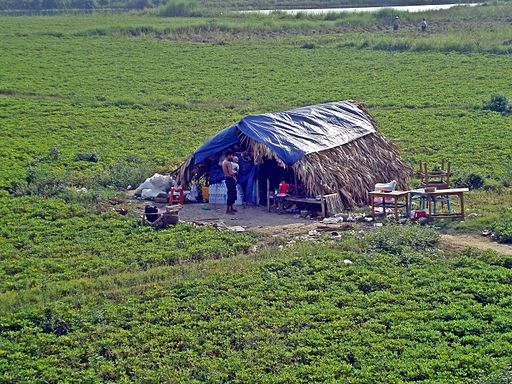
March 29, 2017; Reuters
Necessity is the mother of invention, and in the case of rural Myanmar’s electricity generation, it’s also the mother of improvement.
In rural areas where the national power grid does not reach, residents are creating electricity out of what’s available to them: sun and water. Solar and small-scale hydropower are generating electricity for households or villages, and the country is inadvertently bursting onto the highly modern clean-energy scene.
Myanmar’s power grid, which is susceptible to blackouts, leaves thousands of villages without access to electricity. A 2014 World Bank article found that 84 percent of households had no electricity connection. At the same time, rural villagers are connecting to modern technologies and looking to generate a steady supply of power.
According to Myanmar’s 2014 census, about 178,000 households used private water mills as a primary source of lighting, while 945,000 used solar and 1 million used diesel generators. Diesel generators are expensive to run, making renewable sources more appealing in poor villages. Less sophisticated sources of light, like candles and lamps, used to be prevalent in poorer households, but they are a fire hazard in huts made of wood or bamboo.
Myanmar (Burma) was economically isolated until just a few years ago, and its first democratically elected president took office in 2016. The country does not have laws governing the rural, off-grid power production or a system of support for the burgeoning DIY power industry. In partnership with the World Bank, Myanmar’s National Electrification Plan (NEP) aims to bring power to all citizens by 2030, but the government overwhelmingly favors expanding the coal-powered grid.
Sign up for our free newsletters
Subscribe to NPQ's newsletters to have our top stories delivered directly to your inbox.
By signing up, you agree to our privacy policy and terms of use, and to receive messages from NPQ and our partners.
There are tradeoffs to decentralized power sources, of course; solar grids don’t work that well on rainy days and storing generated power for future use remains a stubborn problem. But here is an opportunity to jump into the energy future without having to overhaul a system from the past.
Leaders of developing countries often opine, as Indian Prime Minister Narendra Modi did in 2015, that wealthy countries who “powered their way to prosperity on fossil fuel” have a greater obligation to lead on clean energy, while countries with nascent industries should be given more leeway; transitioning a national energy system is expensive and complicated.
But Myanmar’s coal-powered energy system is not entrenched enough in much of the countryside to need overhauling. If investments went to renewable energy that’s already a familiar and available source, rather than to developing the fossil fuel grid, Myanmar might be able to modernize its energy grid with minimal cost. The average Myanmar citizen burns 0.238 tons of CO2 emissions per year. In comparison, the average U.S. citizen burns 16.39 tons per year—and that’s practically a ten-year low, down from 19.24 in 2007.
The World Bank is providing $400 million to the $5.8 billion National Electrification Plan, and confirmed that the money is not funding coal or hydropower projects. The NEP plans to subsidize solar systems and mini-grids, but the project will take years to complete, and the subsidies are planned for only half a million households. (There are nearly 57 million people in Myanmar.)
That leaves millions of people currently looking for an energy solution, and necessity has driven them to innovate in ways that are good for the planet. As the country rapidly modernizes, renewable energy sources looking for a market or NGOs wanting to help empower communities through technology might want to look in this corner of the world.—Erin Rubin













